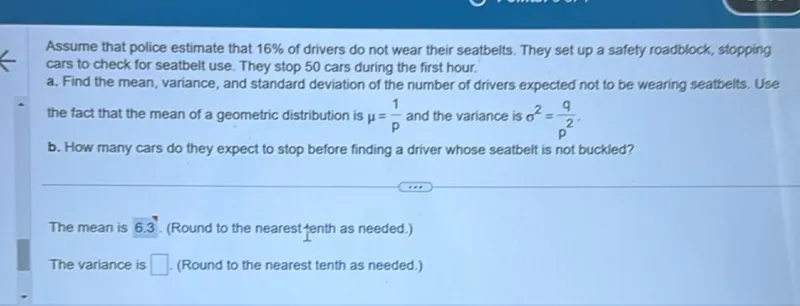Questions: Assume that police estimate that 16% of drivers do not wear their seatbelts. They set up a safety roadblock, stopping cars to check for seatbelt use. They stop 50 cars during the first hour. a. Find the mean, variance, and standard deviation of the number of drivers expected not to be wearing seatbelts. Use the fact that the mean of a geometric distribution is μ = 1/p and the variance is σ^2 = q/p^2. b. How many cars do they expect to stop before finding a driver whose seatbelt is not buckled?

Transcript text: Assume that police estimate that $16 \%$ of drivers do not wear their seatbelts. They set up a safety roadblock, stopping cars to check for seatbelt use. They stop 50 cars during the first hour.
a. Find the mean, variance, and standard deviation of the number of drivers expected not to be wearing seatbelts. Use the fact that the mean of a geometric distribution is $\mu=\frac{1}{p}$ and the variance is $\sigma^{2}=\frac{q}{p^{2}}$.
b. How many cars do they expect to stop before finding a driver whose seatbelt is not buckled?





